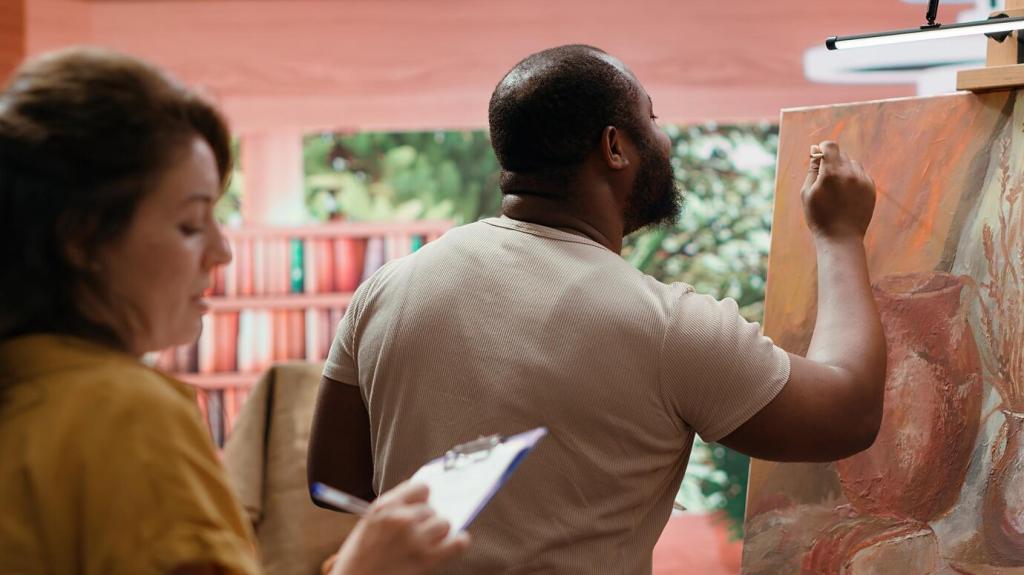Skin Tones and Color Harmony in Watercolor
Try Quinacridone Rose, Ultramarine Blue, and Yellow Ochre, with Burnt Sienna for warms. Mix violets for cool shadows and neutral grays by balancing complements. Limiting pigments keeps harmony, prevents muddy surprises, and helps you learn how each color behaves in water.
Skin Tones and Color Harmony in Watercolor
Observe warmth on cheeks, nose tip, and ears, with cooler notes along jawlines or in reflected chin light. Add subtle temperature shifts rather than big jumps. Let warms and cools whisper across forms so the portrait breathes without shouting, holding depth and quiet pulse.








